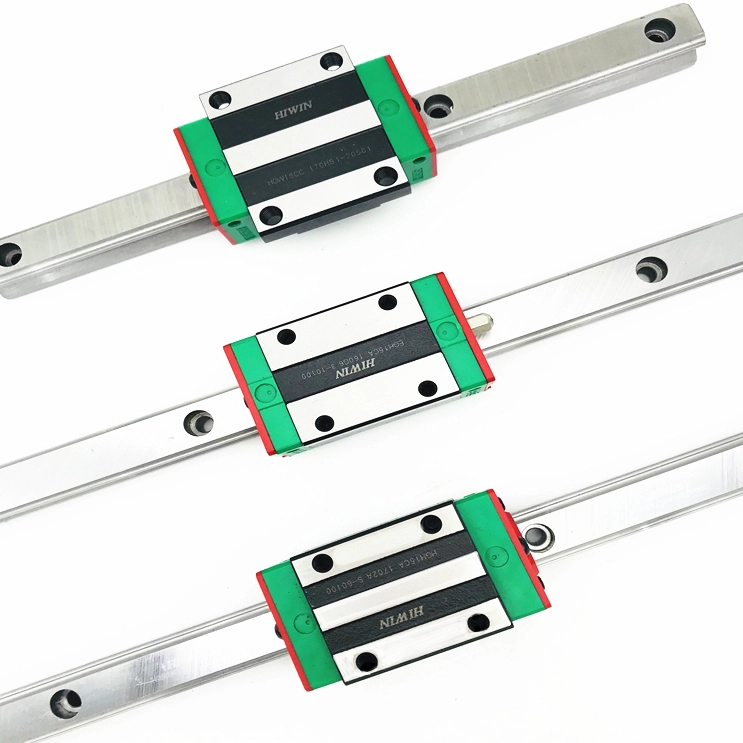Linear guides are machine elements designed to move heavy objects easily and precisely in a straight line. Unlike rotary bearings, which enable rotational motion, linear guides facilitate linear motion. They are known by various names depending on the region and standards, including "recirculating linear ball bearing" (ISO and JIS), "linear guideway" (Japan Machine Tool Builders' Association), and "LM Guide" (THK CO., LTD.).
Structure of the LM Guide
A linear guide typically consists of three main components:
- Mobile Carriage (LM Block): The moving part of the guide.
- Rail (LM Rail): The stationary part that supports the carriage's movement.
- Balls: The rolling elements that enable smooth linear motion by recirculating within the carriage.
History of the LM Guide
- 1944: Development of the ball bushing in the USA, the first linear motion rolling guide.
- 1971: Hiroshi Teramachi developed the angular ball spline to address the limitations of the ball bushing.
- 1972: The world's first linear motion ball guide, the Model LSR, was developed by THK CO., LTD.
- 1973: Introduction of the Model NSR-BC with a combined rail.
- 1975: Development of the Model NSR-BA with a combined block.
Linear Guide Applications
Linear guides are essential in various industries due to their ability to guide linear motion while bearing loads. Common applications include:
- Machine Tools: Enhancing machining accuracy.
- Precision Machinery: Detecting fine movements and changes.
- Industrial Robots: Providing precision, rigidity, and high-speed performance.
- Consumer Fields: Used in railway vehicles, buses, automatic doors, and seismic isolation systems.
Linear Guide Mechanism (Linear Motion System)
Linear guide mechanisms are systems designed to move or position objects along a straight line with high precision. These systems typically consist of:
- Guiding Elements: Such as linear guides, ball splines, and cross-roller guides.
- Driving Elements: Converting motor torque into linear thrust, such as ball screws, belts, hydraulics, pneumatics, or linear motors.
Linear Guide Characteristics
- Light Movement with No Clearance: Rolling guides have no clearance, resulting in lighter movement compared to sliding guides.
- Infinite Linear Motion: The recirculating balls allow for continuous motion over the length of the rail.
- High Permissible Load: Curved grooves provide surface contact, enabling higher load capacity compared to point-contact components.
LM Guide Variations
THK offers various LM Guide models tailored to different applications:
- Radial Load and Four-Way Equal Load Types: For different load distribution requirements.
- Shape-Based Variants: Including wide and miniature types.
- Ball Cage System: Improves equipment performance by reducing friction and wear.
LM Guide Accessories
To protect LM Guides from damage due to foreign materials or insufficient lubrication, THK provides:
- Dust and Chip Guards: Prevent contaminants from entering the block.
- Lubrication Devices: Extend maintenance intervals and ensure optimal performance.
- Integrated Linear Encoders: For precise position feedback.
Mounting Methods and Maintenance
Mounting Methods:
- Mounting the LM Rail: Ensure proper alignment.
- Mounting the LM Block: Usually configured in a two-axis layout with various setup options for the subsidiary axis.
Maintenance:
- Lubrication: Essential for proper functioning. THK offers grease and oil lubricants tailored to different applications.
- Technical Documentation: Available to help extend the service life of LM Guides and provide signs for replacement needs.
Shundu Online Services
Shundu offers various online services for efficient product selection and design, including:
- Service Life Calculator: To estimate product longevity based on usage conditions.
- CAD Downloads: Providing 2D and 3D data for integration into design projects.
- Technical Support: Including inspection tips and signs for replacement.
Conclusion
Linear guides are critical components in numerous applications, enabling precise and efficient linear motion. With ongoing innovations and a broad range of products and accessories, THK continues to support diverse industrial and consumer needs through advanced linear motion technology.

